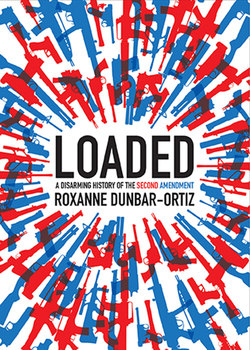Читать книгу Loaded - Roxanne Dunbar-Ortiz - Страница 10
На сайте Литреса книга снята с продажи.
ОглавлениеTHREE
SLAVE PATROLS
Following the Rodney King riots in Los Angeles and the development of Cop Watch groups in cities around the United States, along with the widespread incarceration of Black men in the 1990s,1 what had long been known by scholars, but rarely acknowledged in media or history texts, became increasingly clear on a national level: The origins of policing in the United States were rooted in slave patrols.2
In a study of slave patrols in Virginia and the Carolinas in 1700–1865, historian and law professor Sally E. Hadden writes: “People other than masters or overseers had legitimate rights, indeed, legal duties, to regulate slave behavior.”3 Black people escaping to freedom were hunted down to prevent labor loss to their white slavers, and also to send a message to those enslaved who might be strategizing to lose their chains through rebellion or insurrection.
Because chattel slavery was uncommon in the 1500s in England itself, the existing legal system that colonists brought to the early British colonies in North America did not suffice, so nearly all law related to slavery was forged in the colonies, borrowing from existing practices in Spanish, Portuguese, and English Caribbean plantation colonies, and specifically borrowing the use of slave patrols from the Caribbean and adapting them to local conditions on the continent.
The 1661 and 1688 slave codes in the British Caribbean colony of Barbados extended the task of controlling enslaved Africans from overseers and slavers to all white settlers, in effect shifting private responsibility to the public. Any enslaved person outside the direct control of the slaver or overseer required passes and was subject to questioning by a slave patrol, as well as by any member of the European population; free Black men were denied such power. This collective racial policing was in addition to the traditional English constabulary that investigated and detained European residents for infractions of laws.
British slavers from Barbados moved in large numbers to the South Carolina colony after 1670, and brought the slave patrol practice with them.4 By 1704, the South Carolina colonial government had codified slave patrols and embedded them within the already existing volunteer militias, whose principal role was to repel Native Americans whose land they had appropriated. Members of slave patrols were drawn from militia rolls in every locale. The South Carolina structure of slave patrols was adopted in other colonies by the mid-eighteenth century and would remain relatively unchanged until the Civil War. Following U.S. independence, this structure and practice was applied to what became the Cotton Kingdom, following the U.S. wars against the Muskogee peoples that ended in their forced relocation to Indian Territory.5
Virginia was the first of the thirteen English settler colonies in North America, but there were fewer enslaved Africans there, and they were more widely dispersed than in South Carolina, as Virginia settlements were long surrounded by resistant Native communities. The Virginia militia was founded for one purpose: to kill Indians, take their land, drive them out, wipe them out. European settlers were required by law to own and carry firearms, and all adult male settlers were required to serve in the militia. Militias were also used to prevent indentured European servants from fleeing before their contracts expired, in which case they were designated “debtors.” Despite militia vigilance, many escaped on ships in ports.
